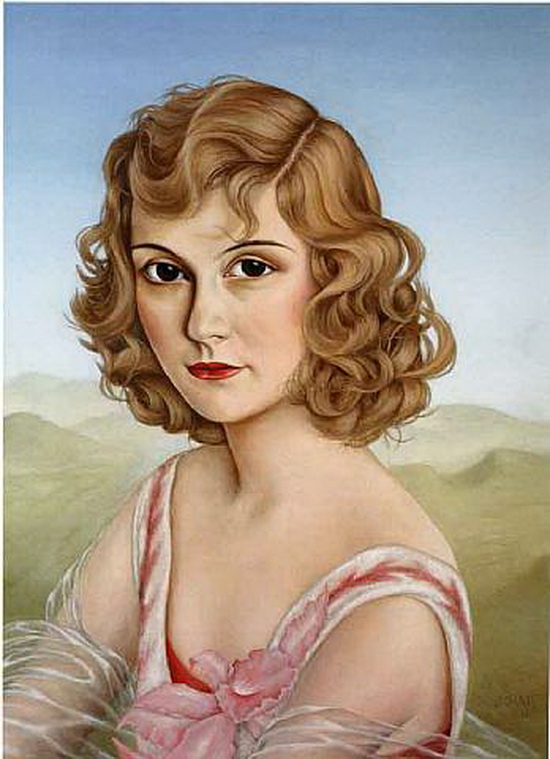Christian Schad

Autoportret
Gandindu-ma ca sunt deja pasionat de Otto Dix, gasesc acum ca e firesc sa-mi placa enorm Schad. Parca sunt frati. Am dat o raita rapida pe net pentru a aduna cateva date despre el.
Text: Wikipedia
Foto: WWW

Christian Schad (August 21, 1894 – February 25, 1982) was a German painter associated with Dada and the New Objectivity movement. Considered as a group, Schad’s portraits form an extraordinary record of life in Vienna and Berlin in the years following World War I.[1]

Schad was born in Miesbach, Upper Bavaria, to a prosperous lawyer who supported him for nearly half his life.[2] He studied at the art academy in Munich in 1913. A pacifist, he fled to Switzerland in 1915 to avoid service in World War I, settling first in Zurich and then in Geneva.[3] Both cities were centers of the Dada movement, and Schad became a Dadaist. In Zurich, he met Dadaists like Hans Arp and Hugo Ball, and also Walter Serner, with whom he launched Sirius, a literary review.[2] He was witness of the foundation of the famous Cabaret Voltaire. Beginning in 1918, while living in Geneva, Schad created his own version of the Photogram (which later was named “Schadographs” by Tristan Tzara) where a contour picture is developed on light-sensitive platters. From 1920 to 1925, he spent some years in Rome and Naples. Having married Marcella Arcangeli, the daughter of a Roman professor, he settled in Naples where he attended painting and drawing courses at the art academy. In 1927 the family emigrated to Vienna. His paintings of this period are closely associated with the New Objectivity Movement. In the late twenties, he returned to Berlin and settled there.

Although many sense[who?] that Schad was horrified by the Nazis, his art was not condemned in the way that the work of Otto Dix, George Grosz, Max Beckmann, and many other artists of the New Objectivity movement was; this may have been because of his lack of commercial success. He became interested in Eastern philosophy around 1930, and his artistic production declined precipitously.[4] After the crash of the New York stock market in 1929, Schad could no longer rely on his father’s financial support, and he largely stopped painting in the early 1930s [1] In 1937, unknown to him, the Museum of Modern Art showed three Schadographs, given by Tristan Tzara, in a show about Dada and Surrealism. The same year, Nazis included Schad in Great German Art, their antidote to the Degenerate Art show.
Schad lived in obscurity in Germany through the war and after it. After the destruction of his studio in 1943 Schad moved to Aschaffenburg. The city commissioned him to copy Matthias Grünewald’s Virgin and Child (Stuppach, parish church), a project on which he worked until 1947. Schad continued to paint in the 1950s in Magic Realist style and returned in the 1960s to experiments with photograms.[5] Schad’s reputation did not begin to recover until the 1960s, when a couple of shows in Europe dovetailed with the rise of Photorealism.
Schad died in Stuttgart on February 25, 1982.

Schad’s works of 1915–1916 show the influence of Cubism and Futurism.[3] During his stay in Italy he developed a smooth, realistic style that recalls the clarity he admired in the paintings of Raphael.[6] Upon returning to Berlin in 1927 he painted some of the most significant works of the New Objectivity. They are characterized by “an artistic perception so sharp that it seems to cut beneath the skin”, according to Wieland Schmied,[7] who calls Schad the “prototypical possessor of the ‘cool gaze’ which distinguishes this movement from earlier forms of realism”.[8]
In 1918 Schad began experimenting by making cameraless photographic images inspired by Cubism. In 1834 and 1835, William Henry Fox Talbot (following on the heels of Thomas Wedgewood in 1801) had originally made these cameraless images, which were prints made by placing objects onto photosensitive paper and then exposing the paper to sunlight, on his way to inventing an early photographic process (which he called Photogenic Drawing). By 1919 Schad was creating photograms from random arrangements of discarded objects he had collected such as torn tickets, receipts and rags. He is probably the first to do so strictly as an art form, preceding Man Ray and Moholy-Nagy by at least a year or two.
Schad’s new imagery was constructed by taking discarded unimportant objects and arranging them. The photograms created from these arrangements had taken on a new form and meaning not considered previously. These prints were published in 1920 in the magazine Dadaphone by Tristan Tzara, who called these images ‘Schadographs’ to express a Dadaist desire to create art from discarded objects. Schad’s descriptions of his techniques were eventually used by both Man Ray and László Moholy-Nagy in their more extensive explorations.

















